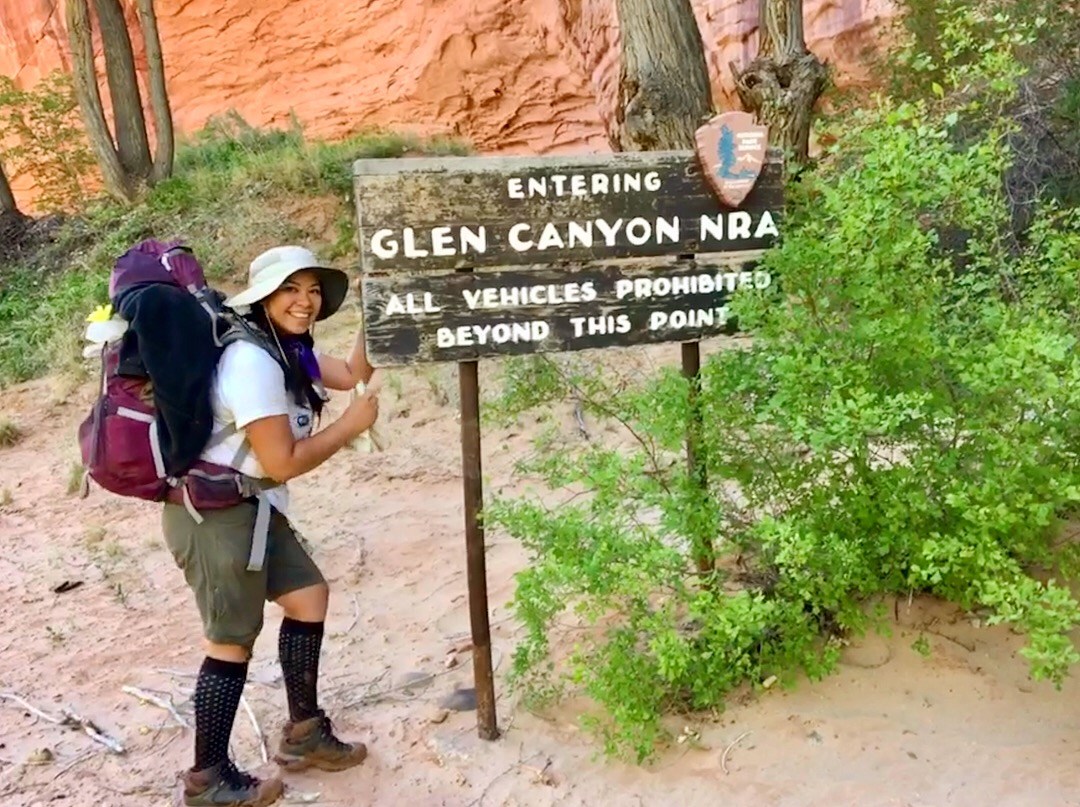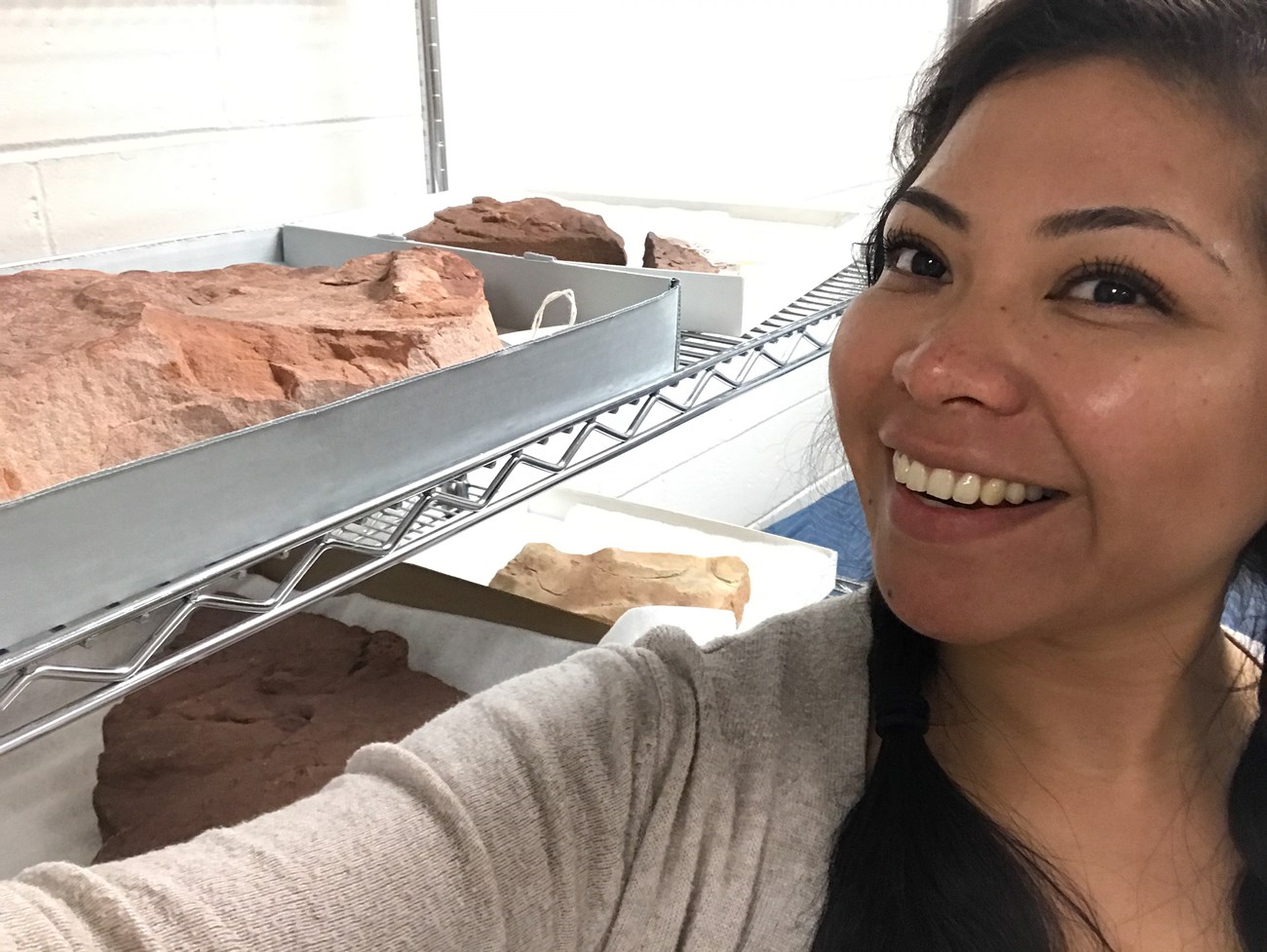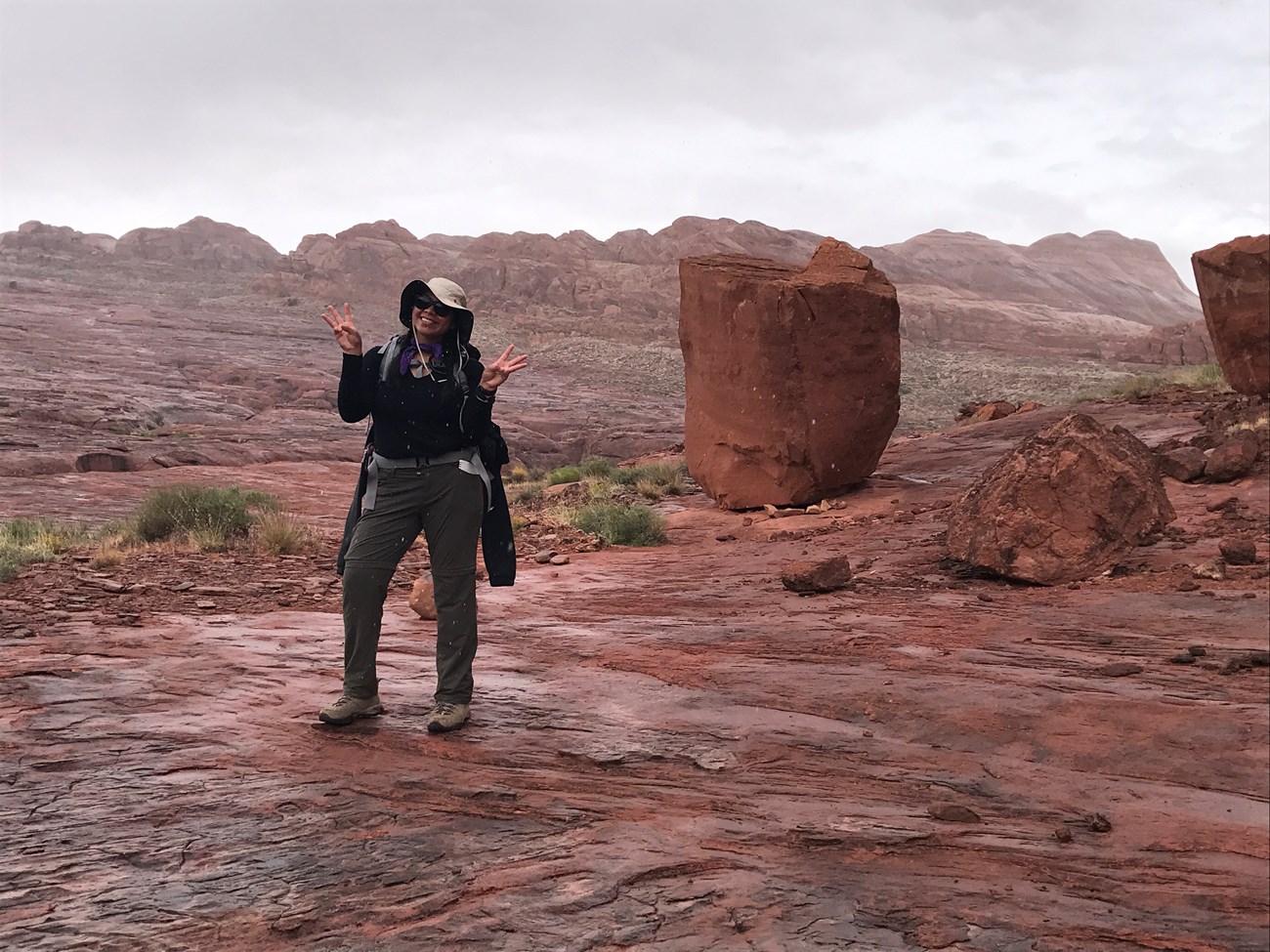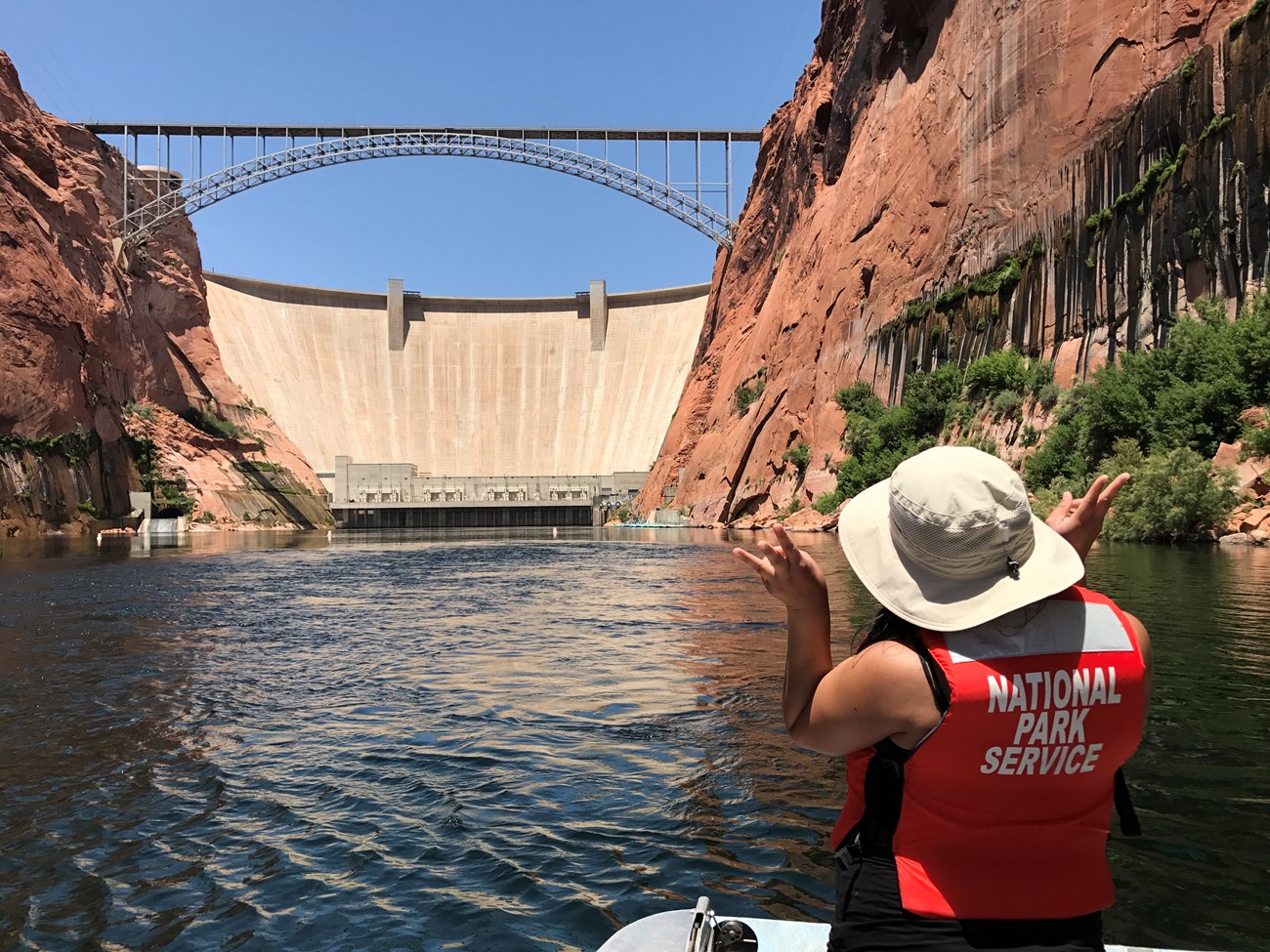Part of a series of articles titled Park Paleontology News - Vol. 10, No. 1, Spring 2018.
Article
Young Paleontologist Helps to Uncover the Fossil Record at Glen Canyon National Recreation Area

Article by Maria Rodriguez, Paleontology intern, Glen Canyon National Recreation Area
for Park Paleontology Newsletter, Spring 2018

NPS Photo
I first arrived at Glen Canyon NRA in May 2017. I graduated from California State University Dominguez Hills with a BS in Earth Science. I was working for the Natural History Museum of Los Angeles County when I was given the opportunity to intern in Glen Canyon NRA. Under Geoscientists-In-The-Parks, I was able to study ichnofossils found all throughout the park and update its paleo database of all known fossil localities. One of my duties is to travel on Lake Powell for paleontology surveys. In the field, I can observe firsthand the various geologic formations that make up Glen Canyon NRA – these include the Moenkopi Formation, Chinle Formation, Kayenta Formation, Navajo Sandstone, Tropic Shale, as well as others. The geologic strata helps understand the changing landscape of the Mesozoic when the environment shifted from an eolian environment to fluvial to a shallow marine environment. I survey, evaluate, and document new paleo sites that include fossil trackways, invertebrate traces, petrified wood, and on some occasion vertebrate fossils. Most specimens remain in situ. We conclude whether a specimen should or should not be removed from site based on factors affecting their condition and fragility.

NPS Photo

NPS Photo
In addition to working on paleontology, I am also a curator for the museum collections in GLCA. I am responsible for cataloging items that have been collected from the field of both natural and cultural significance. Due to our limited space in our museum room, we have built connections with local institutions which have agreed to study and store our specimens for long-term. By doing so, this also allows scientists from all over the world to publish their finds for the benefit of the public.

NPS Photo
Last updated: April 23, 2020
